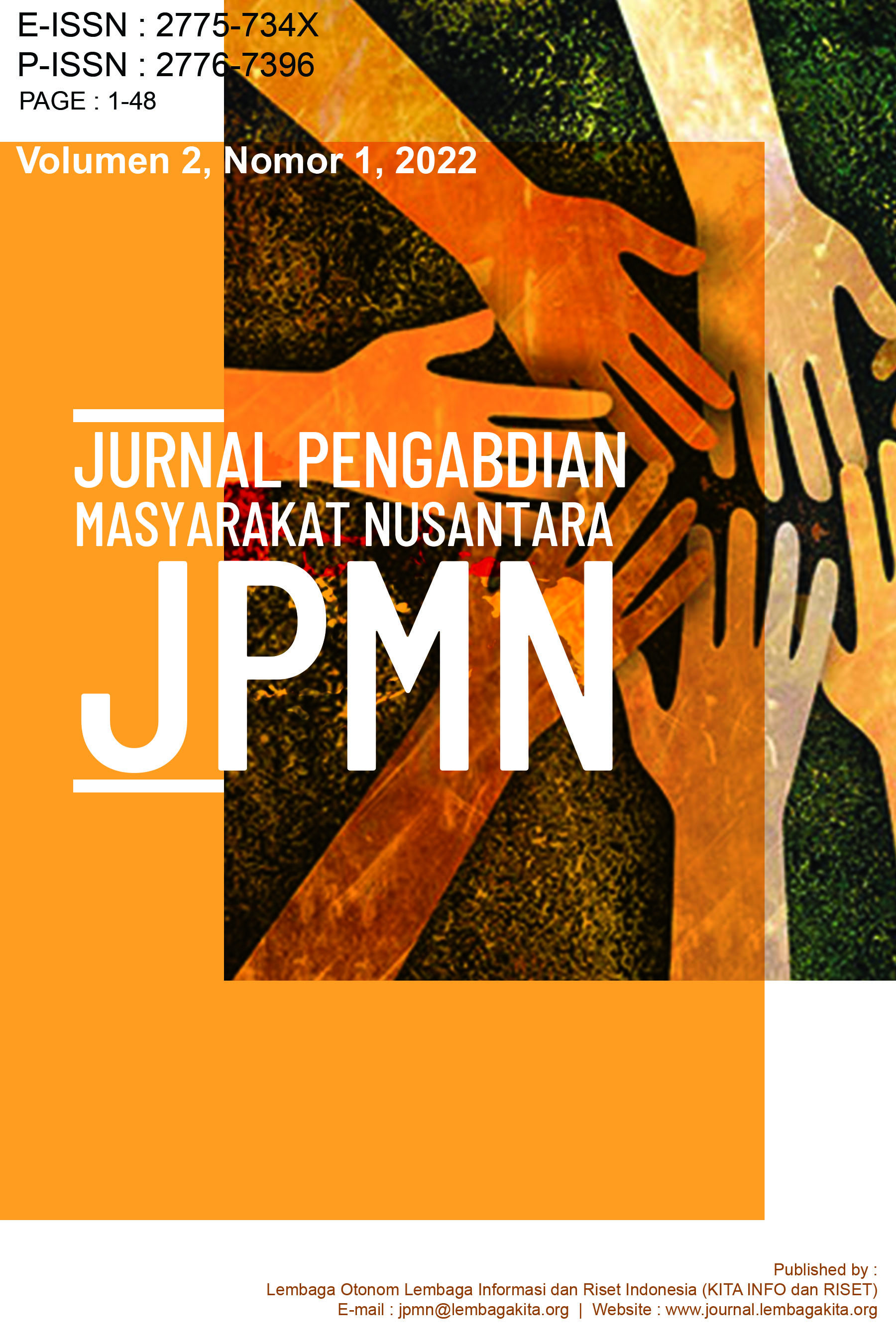Published: 2022-02-04
PEMERIKSAAN BAYI DAN PRAKTIK PEMBERIAN MAKANAN PENDAMPING ASI (MP ASI) DALAM UPAYA PENCEGAHAN STUNTING
DOI: 10.35870/jpmn.v2i1.505
Pratiwi Puji Lestari, Fika Aulia, Dwi Kartika Sari
Article Metrics
- Views 0
- Downloads 0
- Scopus Citations
- Google Scholar
- Crossref Citations
- Semantic Scholar
- DataCite Metrics
-
If the link doesn't work, copy the DOI or article title for manual search (API Maintenance).
Abstract
Globally in 2016, 22.9% or 154.8 million children under 5 years of age suffered from child stunting, which is defined by low height for age. Stunting is often not recognized by the public. Short stature is so common among people that it is considered normal. The difficulty in visually identifying stunted children and the lack of routine assessment of linear growth in primary health care services explain why it took so long to recognize the magnitude of this hidden scourge. The purpose of carrying out examinations for infants and toddlers and providing education about complementary foods is to screen for stunting and provide education about nutritious food.
This Community Service activity is located in the working area of Sungai Tabuk III Health Center, precisely in Paku Alam Village. The activity of examining the growth and development of infants under five as well as education about the manufacture of complementary feeding for mothers of infants under five will be held on October 16, 2021. The target audience for this community service activity is infants aged 0 months to 5.
The results obtained are that there are still children with stunting symptoms (below the red line and the z score in KMS -2) as well as increasing knowledge of targets that are known from evaluation through pretest and posttest.
Keywords
Nutritional status ; Dear ; toddler ; Child ; Stunting
Article Metadata
Peer Review Process
This article has undergone a double-blind peer review process to ensure quality and impartiality.
Indexing Information
Discover where this journal is indexed at our indexing page to understand its reach and credibility.
Open Science Badges
This journal supports transparency in research and encourages authors to meet criteria for Open Science Badges by sharing data, materials, or preregistered studies.
How to Cite
Article Information
This article has been peer-reviewed and published in the Jurnal Pengabdian Masyarakat Nusantara (JPMN). The content is available under the terms of the Creative Commons Attribution 4.0 International License.
-
Issue: Vol. 2 No. 1 (2022)
-
Section: Articles
-
Published: %750 %e, %2022
-
License: CC BY 4.0
-
Copyright: © 2022 Authors
-
DOI: 10.35870/jpmn.v2i1.505
AI Research Hub
This article is indexed and available through various AI-powered research tools and citation platforms. Our AI Research Hub ensures that scholarly work is discoverable, accessible, and easily integrated into the global research ecosystem. By leveraging artificial intelligence for indexing, recommendation, and citation analysis, we enhance the visibility and impact of published research.




No author biographies available.
-
-
-
Riskesdas. RISET KESEHATAN DASAR. 2018; Available from: http://www.depkes.go.id/resources/download/general/Hasil Riskesdas 2013.pdf
-
-
-
-
-
-
-
-
-
-
-
-
-
Fatemi MJ, Fararouei M, Moravej H, Dianatinasab M. Stunting and its associated factors among 6–7-year-old children in southern Iran: a nested case–control study. Public Health Nutr [Internet]. 2018/10/15. 2019;22(1):55–62. Available from: https://www.cambridge.org/core/article/stunting-and-its-associated-factors-among-67yearold-children-in-southern-iran-a-nested-casecontrol-study/122DA21B9DFCAC5319B68C21942DC463
-
-
Darteh EKM, Acquah E, Kumi-Kyereme A. Correlates of stunting among children in Ghana. BMC Public Health [Internet]. 2014;14(1):504. Available from: https://doi.org/10.1186/1471-2458-14-504
-

This work is licensed under a Creative Commons Attribution-NonCommercial-NoDerivatives 4.0 International License.
Authors who publish with this journal agree to the following terms:
1. Copyright Retention and Open Access License
Authors retain copyright of their work and grant the journal non-exclusive right of first publication under the Creative Commons Attribution 4.0 International License (CC BY 4.0).
This license allows unrestricted use, distribution, and reproduction in any medium, provided the original work is properly cited.
2. Rights Granted Under CC BY 4.0
Under this license, readers are free to:
- Share — copy and redistribute the material in any medium or format
- Adapt — remix, transform, and build upon the material for any purpose, including commercial use
- No additional restrictions — the licensor cannot revoke these freedoms as long as license terms are followed
3. Attribution Requirements
All uses must include:
- Proper citation of the original work
- Link to the Creative Commons license
- Indication if changes were made to the original work
- No suggestion that the licensor endorses the user or their use
4. Additional Distribution Rights
Authors may:
- Deposit the published version in institutional repositories
- Share through academic social networks
- Include in books, monographs, or other publications
- Post on personal or institutional websites
Requirement: All additional distributions must maintain the CC BY 4.0 license and proper attribution.
5. Self-Archiving and Pre-Print Sharing
Authors are encouraged to:
- Share pre-prints and post-prints online
- Deposit in subject-specific repositories (e.g., arXiv, bioRxiv)
- Engage in scholarly communication throughout the publication process
6. Open Access Commitment
This journal provides immediate open access to all content, supporting the global exchange of knowledge without financial, legal, or technical barriers.
